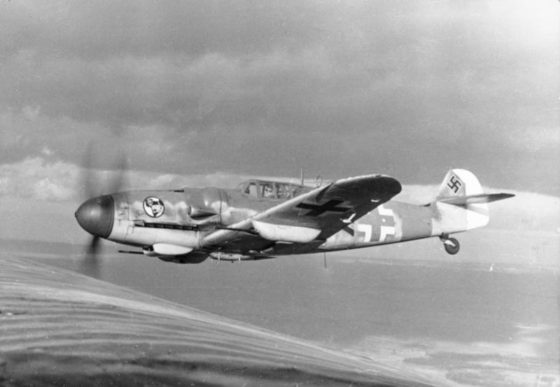German fighter pilot identified after 79 years from DNA on envelope


An archive search and some DNA found in the glue of an old envelope have helped identify a German fighter pilot whose plane crashed in aerial combat over Friesland in 1943.
Unteroffizier Konstantin Benzien was the only pilot whose identity was still unknown 79 years after the fighting that broke out when the Luftwaffe intercepted an American bombing mission over the north-western province.
Ten German fighter planes and 20 American bombers went down in December 1943 but most of the pilots could be identified relatively quickly.
However, Benzien’s Messerschmitt Bf 109, which landed on a butcher’s shop in the village of Opeinde, came down with such speed it buried itself deep into the soil.
‘Some of the wreckage found on the site included part of a propellor which showed the impact of the crash, Alexander Tuinhout, researcher with the Missing Airmen Memorial Foundation, told local broadcaster Omrop Fryslân.
‘But the most important find was a ring Konstantin had been wearing,’ he said. ‘That brings you really close to who the pilot was.’
DNA evidence
When researchers started digging in the wartime archives they found just two German airmen who had taken part in the fight were still missing. In 1999 the SMASF discovered that one of the men, Friedrich König, died near Peest in Drenthe. This meant the pilot who crashed in Opeinde could only be Konstantin Benzien.
The search wasn’t over for the SMAMF, however. The German authorities only identify missing soldiers based on DNA evidence and that was not available at the time.
The researchers managed to track down a sister of Benzien’s in the United States but found she had died. However, her grandchildren, whose DNA would not have helped identify the pilot, turned out to have held on to a number of letters sent during their grandmother’s lifetime.
‘A forensic investigation found her DNA in the glue under the stamps and the sealing glue and it matched the DNA taken from her brother’s bones,’ Tuinhuis said.
Benzien’s remains are buried in an unnamed grave at the German war cemetery in Ysselstein in Limburg. ‘It says ‘ein Deutscher Soldat’, Tuinhout said. ‘It’s always been our aim to have that changed to a cross with a name and now we can.’
Thank you for donating to DutchNews.nl.
We could not provide the Dutch News service, and keep it free of charge, without the generous support of our readers. Your donations allow us to report on issues you tell us matter, and provide you with a summary of the most important Dutch news each day.
Make a donation